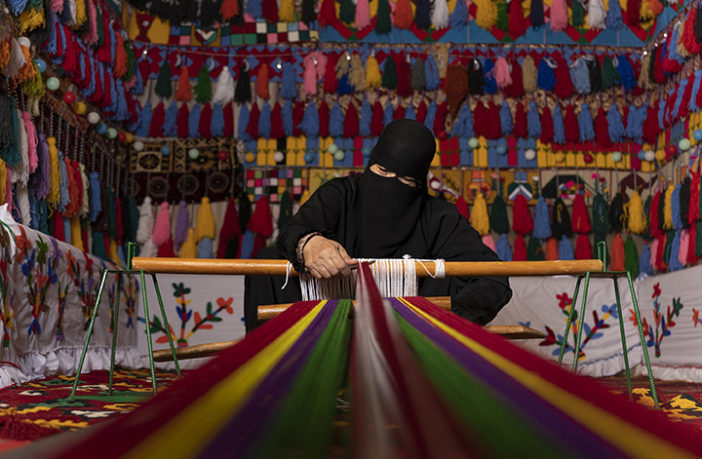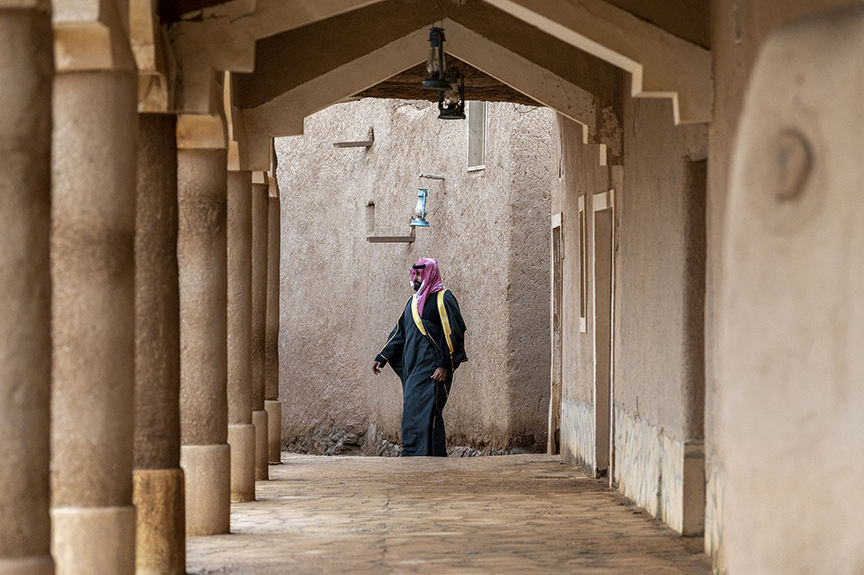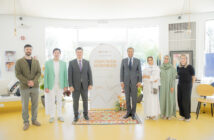Culture, heritage, and traditions are some of the most exciting things about a country, and Saudi Arabia has a lot of these. Immerse in the uniqueness of their customs and traditional apparel and discover the myriad of threads woven into the everyday fabric of the Saudi people’s lives.
The culture, tradition and customs of Saudi Arabia are largely influenced by the climate, religion and terrain of the land. The Arabian Peninsula has a culture which is as intricate as its people. It is vastly influenced by the Bedouin lifestyle and Islam. The tribal influences make each province of the Kingdom unique and celebrated. The Saudi people are well-known for their hospitality, generosity, and honor. Being the birthplace of Islam, the Saudis are known to welcome the guests of Allah with pomp and fervor especially during the month of Ramadan and for Hajj. Islamic influence can extensively be seen in all extents of the society- legal, familial, social and political.
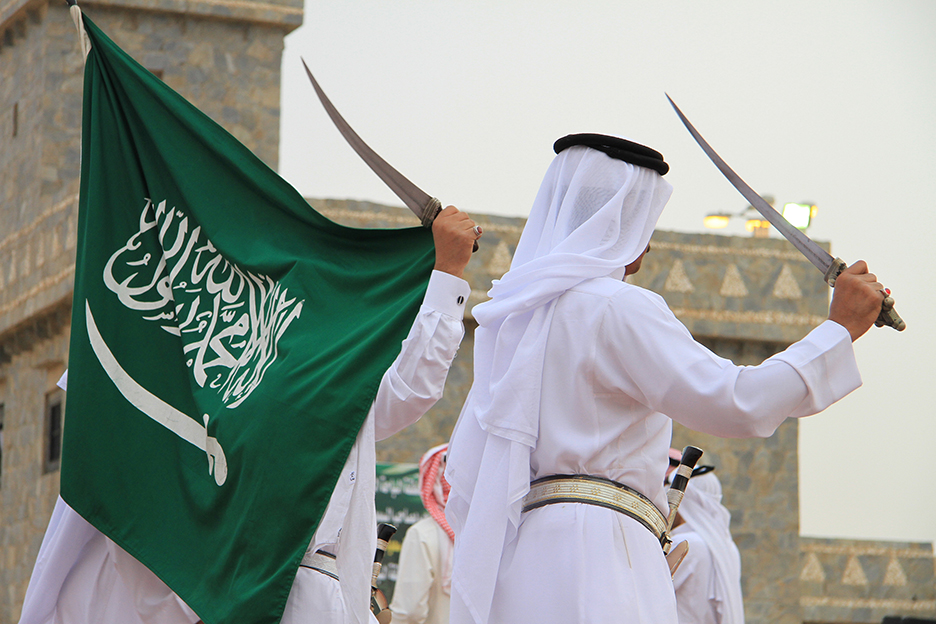
Culturally, the Kingdom is known for its pottery, weaving, poetry, literature and the Ardha. The Ardha is done by wielding swords. In recent years a lot has been done to protect the history and customs of the land. In 2022, for the very first time, February 22nd was celebrated as Founding Day to celebrate the history and culture of the Saudi State. The National Day is celebrated on the 23rd of September every year.
Lately, a lot of artistic space is being given for open museums featuring portraits and paintings with a backdrop of Arabic poetry. Poetry is encouraged in Islam and Saudi Arabia has produced great poets of its time. Poetry is the matriarch of the Arabic language and has helped literature grow enormously in Arabia. Najd and Hejazi are common forms of poetry here. Poetry was used to propagate social and religious messages to the common man.
The food culture of Saudi Arabia is one of the best in the world. It is as varied as the culture here. Dates, yoghurt, seafood, poultry and lamb serve base to the cuisine of the region. Arabia is famous for its teahouses and cafes which serve the infamously famous Kahwa (coffee) and mint tea. The Ministry of Culture has declared the year 2022 as the Year of Saudi Coffee (see page – of this issue for more details) .
The nomadic Arabs who roamed the Arabian Peninsula utilized easily available resources in a sustainable way. The culture and customs of any place sprout from the intrinsic creativity of the people. One such talent is Sadu Weaving (a form of embroidery) which is currently creating waves in the fashion world; an art form of yore which is making a grand comeback. Using raw material available from sheep and camels, yarn used to be spun in various designs and patterns reflecting the lifestyle of the tribes. Sadu Weaving has recently been added to the list of UNESCO’s Intangible Cultural Heritage.
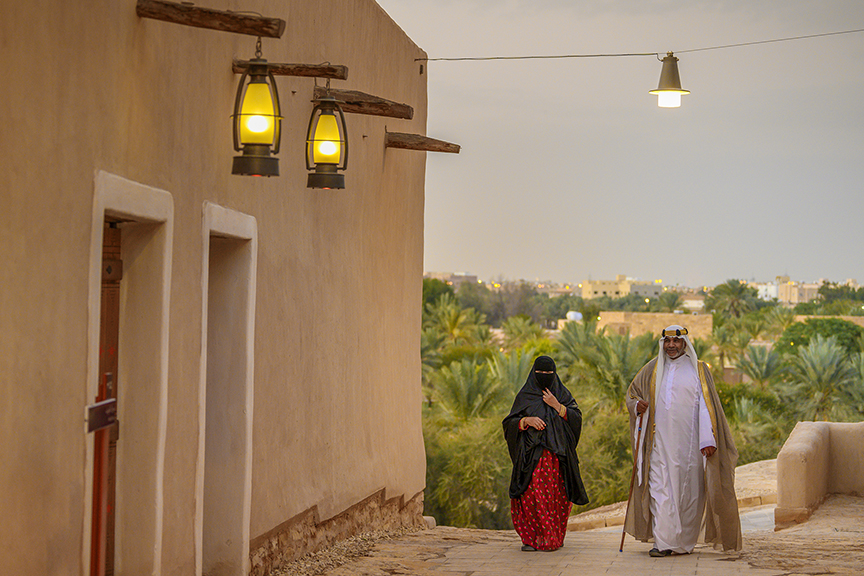
The Saudi people are known for their modest yet chic sense of dressing. The traditional costumes for men and women vary from region to region within the country. From the flower crowns of Asir to the pearl hair decor in the Western Province, variation is seen across urban and rural areas. Each Saudi region preferred a different clothing and embroidery style.
Inhabitants in the mountainous region wear dark colored clothes whereas lighter shades are preferred in the coastal regions. Generically, traditional garments in this region are loose and floor-length. For men and women, there are variations of a loose ankle-length shirt with full sleeves called the thawb. For the women, there’s a vast choice of floor-length frocks, maxi dresses, kaftans, jallabiyahs depending on the aforementioned factors.
At ceremonial occasions and festivals, Saudi men wear Thawb over which is worn a coat called the bisht. The bisht is made up of camel hair or wool. The entire look is topped off with the shemagh or ghutra – a red and white checkered square piece of cloth, which is worn over the head. The shemagh is kept in place with a braided circular cord called an igal. A taqiyah (skullcap) is also used on the head to provide more stability to the shemagh.
The traditional clothes of each province are as follows.
Central Region (Najd)
This region is also referred to as the Riyadh Province. Apart from the abaya which is worn with a headpiece called the shaila, women also preferred to wear Al Mukhnaq, a silky outer garment made of chiffon or tulle. More popular among the traditional dresses of the Najd are the toor and menikhel which are worn on special occasions and are made of sequined black tulle.
Abayas in the Najd society differed depending on social status and standard. Golden buttons and threads were used to symbolize the upper strata of the society. Due to the dryness of the region, the populaces’ clothes were known for their wide sleeves to catch breeze and retain moisture in the body.
The men wore the bisht over their white (in summer) or black/blue (in winter) thawbs. The bisht is usually worn on important occasions like weddings, Eids, funerals et al.
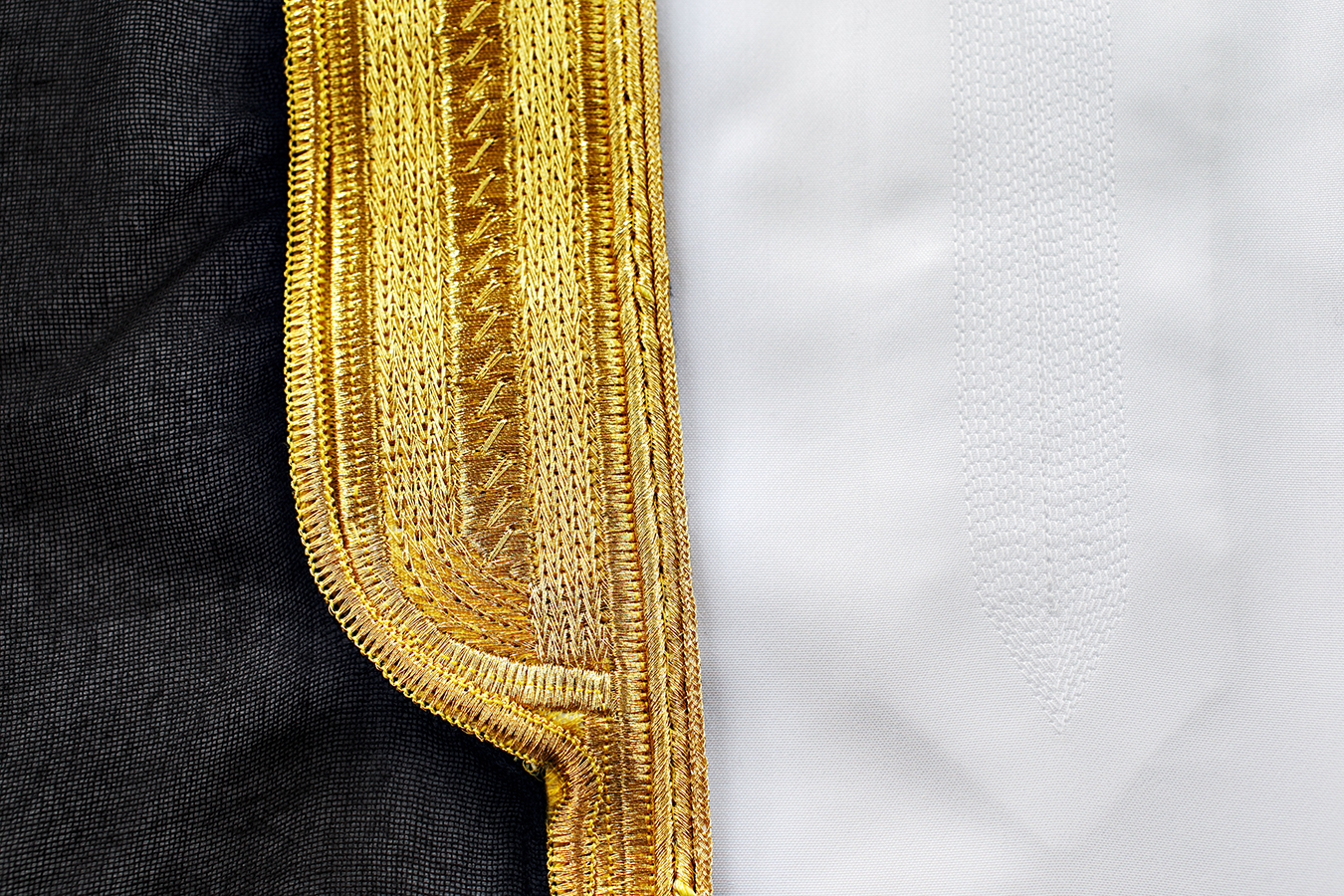
Eastern Region
Dara’a is an unattached garment which is used by women as the main garment in the Eastern region. Depending on the fabric, embroidery and occasions, the Dara’a differ namely, umm asa, mufhaha and the modern version nafnuf. A traditional thawb would be worn over the dara’a. A bridal costume would comprise of a green Dara’a called nashil over which would be worn a Thawb. The thawb al-nashil was greatly influenced by shades worn in India, a courtesy of the merchants who travelled for trade. A pair of pants sirwal and a scarf al-Mshamar tie down the outfit.
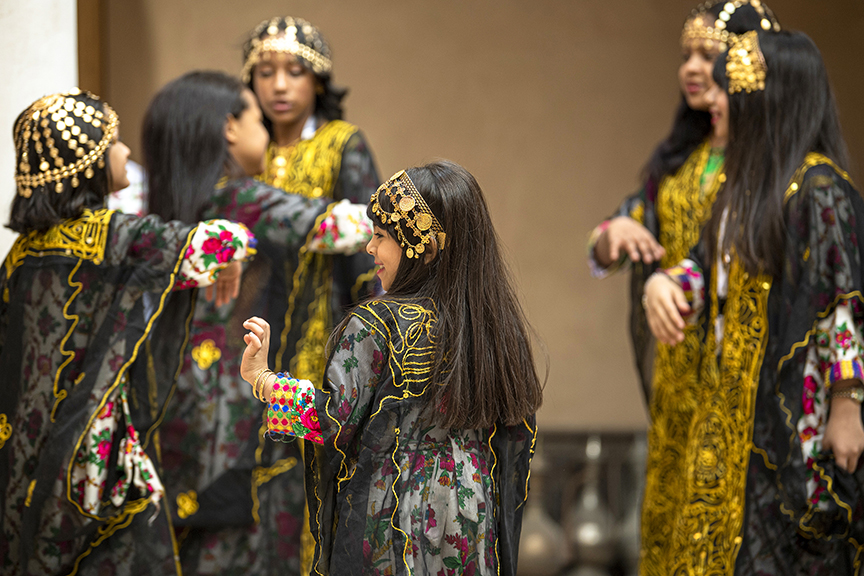
Elderly women in this region also favored to wear a golden mask when venturing out which left the eyes uncovered known as the batoola. Al-Ahsa is famous for kitting traditional clothes such as the bisht.
Northern Province
The thawbs worn in this region are the most practical in design owing to the harsh mountainous terrain and cold. For ease of movement, the women in these lands wore dresses sparsely embroidered with fine line stitching. There thawbs were stitched longer in size in order for the material to be tucked at the waist. These outer thawbs are labelled as al-midrgah and were usually black in colour. The dresses worn in this region were vastly influenced by the surrounding areas and neighbouring countries. Trade and travels brought along material and influences from far off places that were incorporated into the traditional garb of the land.
The men and women here garb themselves in thicker fabrics and trousers owing to the frigid weather.
Southern Region
The dresses worn in the Southern Province of Saudi Arabia are a riot of colors and patterns. Saudi women in the south wear beautiful black thawbs (called mujanab) which are decorated on the corners with different colored threads or beads and the attire is fastened with a yellow or red band. These thawbs are locally known as al-muwarah and al mubgl. On festive occasions, over their square scarves, women also wear silver forehead accessories. They also tie the sheylas over their heads with a yellow or red band.
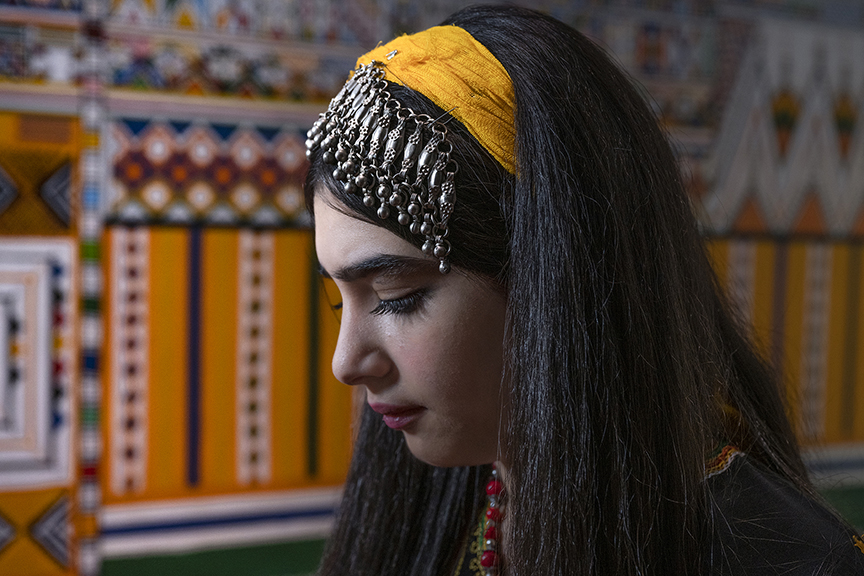
Men wear colorful embroidered wrap around trousers, jubbah, and carry a dagger. The thawb al mujanab is embroidered with the Qatt pattern and completed off with silver meshes at the waist. They also wear flower headdresses and are commonly referred to as the “Flower Men of the South”.
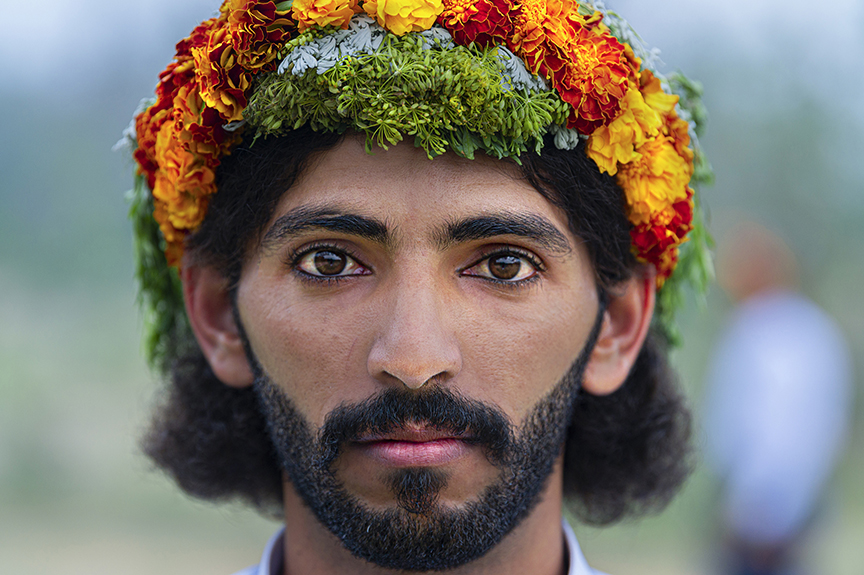
The Asir region of Saudi Arabia is very colorful when compared to the rest of the country. Asiri men wear brightly hued flower wreaths on their head. Their dresses are patterned with geometrical motifs that reflect the rich and green heritage of the land. Famed art form from this land is the Al-Qatt pattern. It comprises of dots, triangles, lines, and squares drawn on the bare interior walls of majlis and then filled with locally acquired colors sourced from indigenous resources, for instance- rocks, flowers and leaves.
Al-Qatt Al-Asiri is inscribed on UNESCO’s list of Intangible Cultural Heritage of Humanity. This has naturally had a great influence on the fashion of the region too.
Western Province (Hejaz)
This province is also known as the Hejaz region. The cities of Makkah and Madinah are central to this region. The cosmopolitan city of Jeddah, bordering the Red Sea, is also known as the Gateway to Makkah. Hijazi men are known to dress themselves up in thawbs over which they wear a sudairi (vest) and their headdress comprises of the shemagh and igal.

The women wear beautiful ornate headpieces and dresses embossed with gold embroidery. The coastal shores have brought in influences in designs from India, Persia, Egypt and other surrounding countries.
The Ministry of Culture is doing much to make the younger generation aware of their roots and rich culture. Events like Riyadh Season, Jeddah Season and the Al Ula Tourism are prime examples of the exemplary work that is being done. One such establishment that celebrates the past and future of Saudi Arabia is the King Abdulaziz Centre for World Culture (Ithra) in Dhahran.
Celebrate and immerse in the traditions of Saudi Arabia, where the past meets the future.
Art Patterns of Saudi Arabia
When culture is infused in art, we get these patterns that show the creativity of the Saudi people, harness their history, and strengthen the identity of Saudi Arabia.
SADU is the most popular pattern that reflects the simple and pure desert environment in its rhythmic, repetitive, and symmetrical geometric design. Commonly seen in Bedouin weaving, tents and rugs.
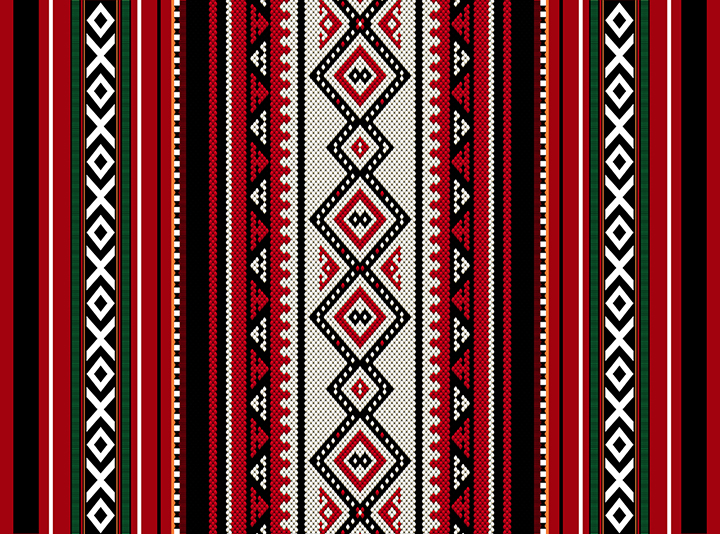
SHALKY is a floral pattern commonly seen in fabrics used for house dresses and handicrafts. It has a common flower symbol and comes in bright, lively colors.
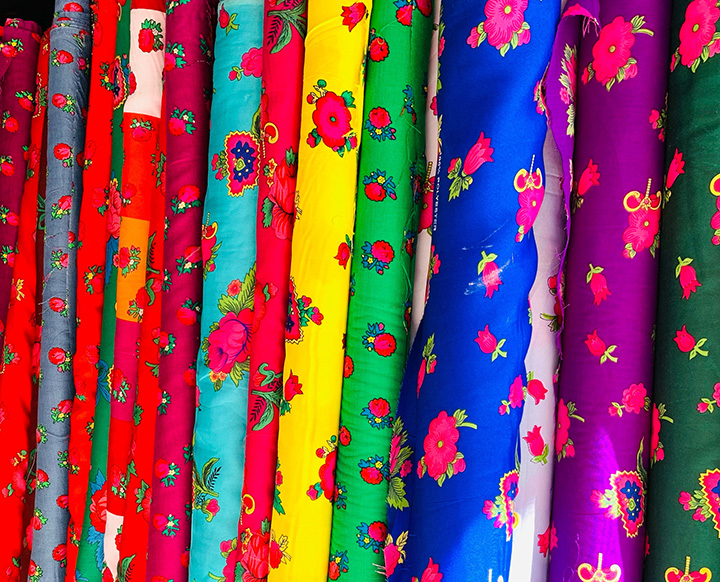
AL QATT AL ASIRI is a traditionally female interior wall decoration composed of colorful icons of geometric shapes and symbols. Considered as a key element to the identity of the Asir region, this pattern is usually found in walls and doors of houses painted as a form of social bonding for families and communities.

NAJD is inspired by the Central region’s nature: from its palms and flowers to sun rays and mountains. It is commonly seen in family homes, esp. in doors, to welcome guests.
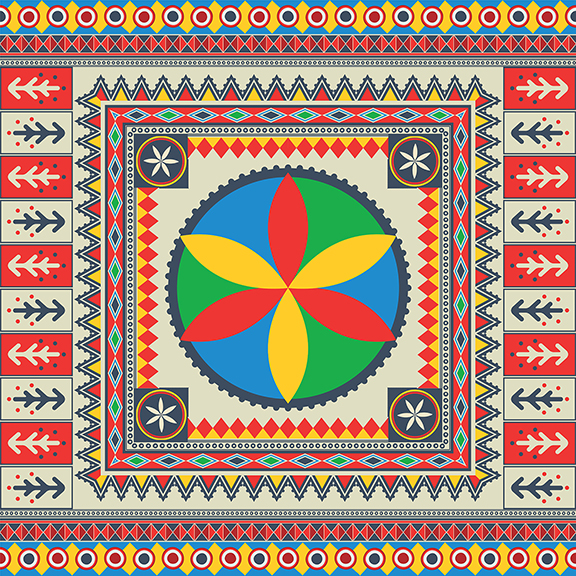
Photo Credit: Ministry of Culture

